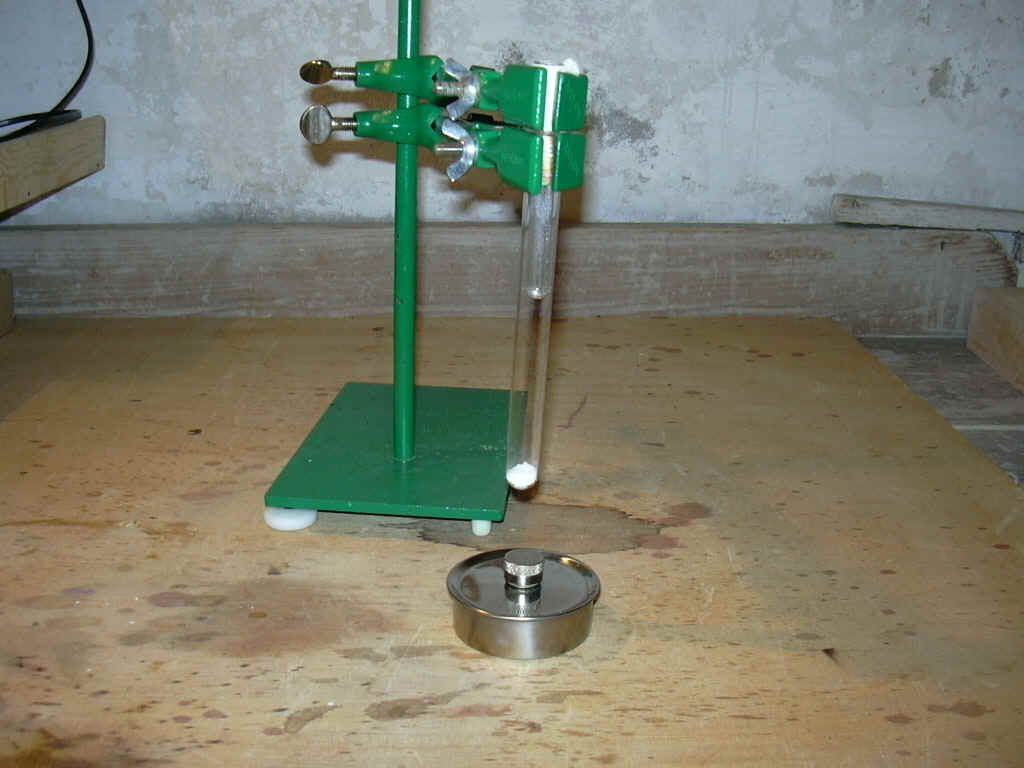Sublimation of Phthalic Anhydride
Chemicals needed
Phthalic anhydride  Xn R 22-37/38-41-42/43 S (2)-23-24/25-26-37/39-46
Xn R 22-37/38-41-42/43 S (2)-23-24/25-26-37/39-46
One can also use other easily vaporized substances, such as iodine or caffeine, but phthalic anhydride forms splendid crystal fibers and no harmful vapors are emitted from the apparatus.
Equipment needed
stand with two sleeves and clamps
two test tubes (one big, one small, must fit inside one another)
burner (preferably alcohol-)
Test procedure
- 2-3 spatula-tipfuls of phthalic anhydride into the larger test tube, the smaller one is for the most part filled with cold water.
- Clamp both test tubes onto the stand such that the the smaller one is insersted as far as possible into the larger. Wrap the smaller test tube with kitchen paper or something similar if the clamp cannot be fastened firmly enough.
- The larger test tube is gently heated from below. The anhydride melts and finally evaporates. One can very well observe how the vapor in the test tube continually rises to the top and is finally deposited on the cooling finger.
- Before the anhydride has completely evaporated one terminates the heating process. The apparatus is let to cool and one removes very carefully (pulling up perfectly straight) the cooling finger. The anhydride has been deposited on the lower end of the cooling finger and is usually quite beautiful to look at.
Disposal
- The anhydride can be easily scraped off of the cooling finger and can be either reused or disposed of as halogen-free organic waste.
- The substance in the cooled off larger test tube has been deposited as a firm crust. If mechanical treatment does not help, one can use acetone, alcohol or something similiar to remove the substance. The solvent can then be disposed of as halogen-free waste.
Elucidation
Many solid substances are volatile enough such that they can be vaporized (sublimation), with cooling one can then precipitate them again (resublimation). One actually speaks of sublimation only in that case where a substance passes without melting into a gaseous state (e.g. iodine). Sublimation is a useful process in the laboratory in order to purify small amounts of sufficiently volatile and thermally stable substances.Industrially with this process large amounts of substances are purified, e.g. iodine or sulphur.
Photos

Experimental apparatus before heating

Experiment shortly before ending heating, the resublimated anhydride is clearly seen within the cooling finger.
Literature
derived from V315 "Phtalsäureanhydrid", S. 184, [1]
